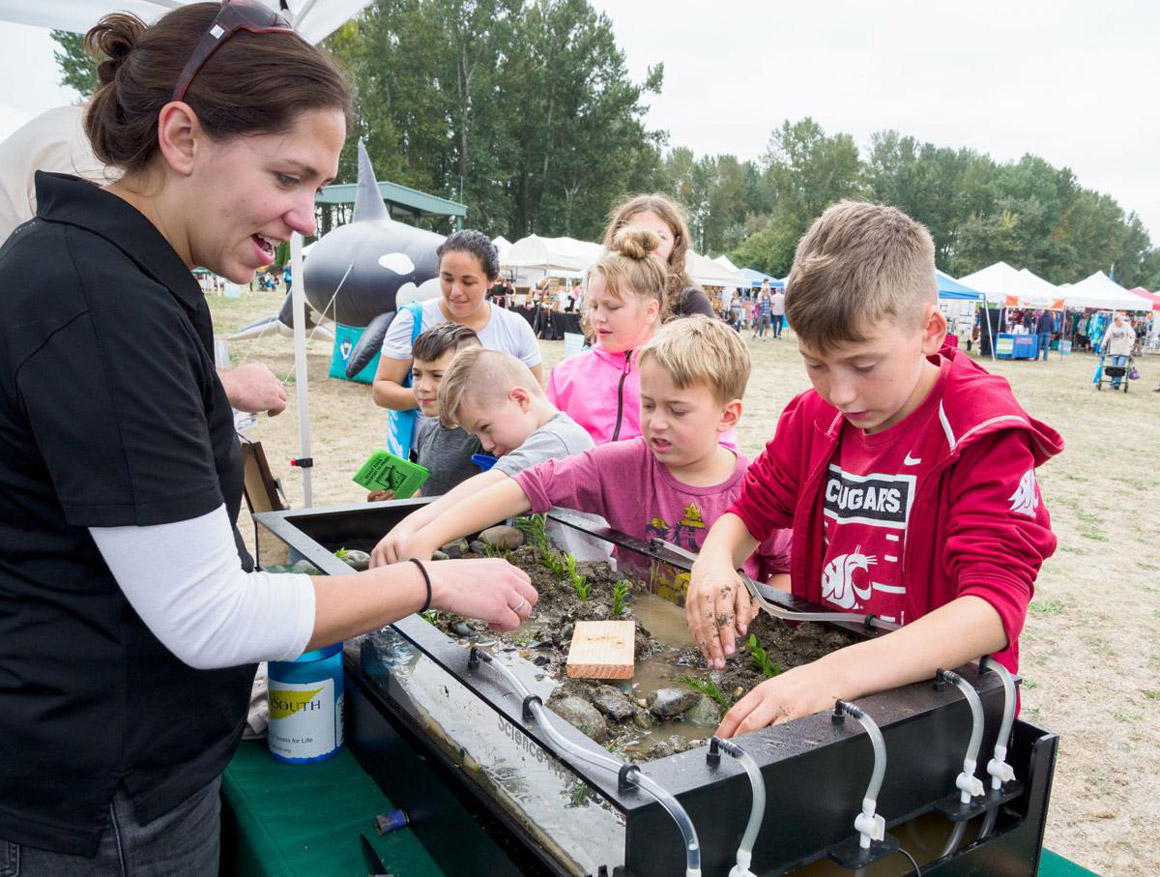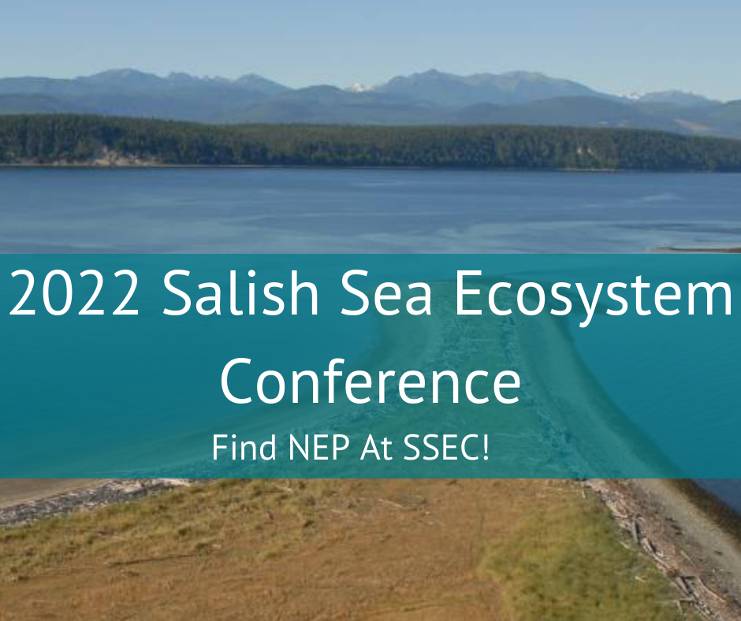The 2022 Salish Sea Ecosystem Conference is right around the corner. Every two years, the conference brings together scientists, knowledge holders, First Nations and tribal government representatives, resource managers, community and business leaders, and policy makers to share science and stories of the Salish Sea with an eye towards making progress on building resilience and a healthier community.
More...
Supported by the U.S. Environmental Protection Agency and Environment Canada, the Salish Sea Ecosystem Conference is an international platform that builds shared policies and practices to guide future actions for protecting and restoring the Salish Sea and its watersheds. It is a cornerstone of years of transboundary collaboration which requires a high level of integrity, purpose and inclusive leadership.
A cursory view of the agenda indicates a compelling, cross-cutting approach supported by decision support tools, excellence in engagement, pathways for putting science into action and collectively responding to the massive population increase—challenges which juxtapose against our region’s abundance and wildness.
SIL Supported Projects at the Salish Sea Ecosystem Conference
Over the past four years the Habitat, Shellfish and Stormwater Strategic Initiative Lead (SIL) teams have used EPA Geographic Funds (commonly referred to as NEP Funds) to directly support practitioners work to restore Puget Sound and the greater Salish Sea, many of whom will be highlighting their work at this year’s conference.
Poster Sessions
Marta Green
San Juan County
Vessel Drift and Rescue Tug Response Analysis for the Strait of Juan de Fuca to the Southern Strait of Georgia.
Session 2
April 26, 4:30-5:00pm
Paul Schlenger
Environmental Science Associates
Restoration Implementation Planning for Salish Sea Stream Mouths Impacted by the Railroad.
Session 3
April 27, 4:00-4:30pm
Presentations
Chris Gregersen, King County
Utilizing new PIT tag technology to assess juvenile Chinook migration patterns, residence time, and survival in the lower Green River.
Hatchery, Habitat, & Survival
April 27, 2:30-4:30pm
Kollin Higgins, King County
Getting from one size fits all to variable width riparian buffer recommendations.
Collaboration, Communication, & Planning
April 27, 2:30-2:45pm
Tina Whitman, Friends Of The San Juans
Marine shoreline armor mapping, change analysis (2009-2019) and regulatory compliance and effectiveness assessment for San Juan County, Washington.
Invasive Species and Nearshore
April 28, 11:00-11:15am
Matthew Rogers, University of Washington Climate Impacts Group
Floodplains By Design: Technical Guidance and Resources for the Integration of Climate Information in Floodplain Management.
Integrating Climate Science into Flood Plain Management
April 27, 2:00-2:15pm
Tess Wrobleski, University of Washington Climate Impacts Group
Floodplains by Design: Introductory Guidance and Resources for the Integration of Climate Information in Floodplain Management.
Integrating Climate Science into Flood Plain Management
April 27, 2:15-2:30pm
Erica Asinas, University of Washington Climate Impacts Group
Floodplains by Design: Linking community perspectives to climate services for adaptive, multi-benefit floodplain management.
Integrating Climate Science into Flood Plain Management
April 27, 2:30-2:45pm
Panel Sessions
Managing Floodplains Collaboratively: Cross-border learning on fish, farms, and floods.
Collaborative Floodplain Management 1 (Panel)
April 26, 11:30- 1:00pm
Snapshot Talks
Jeff Cedarbaum
Washington Department of Ecology
Adaptive Regulation for Nonpoint Pollution: Ecology's Role in Protecting Shellfish.
Snapshot Talk
Anytime Access
Presentations
Corrina Marote
Skagit County Public Health
2021-2022 Preventing Non-Point Source Pollution: On-site Sewage Program During the Time of the COVID-19 Pandemic
Shellfish Galore
April 26, 2:00-2:15pm
Haley Harguth
Hood Canal Coordinating Council
Hood Canal Shellfish Initiative: A collaborative multi-benefit approach to shellfish aquaculture, ecosystem protection, and cultural opportunities.
Shellfish Galore
April 26, 2:30-2:45pm
Leslie Banigan
Hood Canal Coordinating Council
Ten years of success: Lessons learned from the Hood Canal Regional Pollution Identification and Correction (HCRPIC) Program.
Green Infrastructure
April 26, 2:15-2:30pm
Meagan Jackson
Public Health - Seattle & King County
On-site sewage system (OSS) and social vulnerability GIS dashboard: using data to inform approaches for equitable wastewater futures.
Bivalves, Biodiversity, & Wastewater
April 28, 10:15-10:30am
Brian Allen
Puget Sound Restoration Fund
The Oyster Habitat Restoration Project and Assessment Pathway: A plan of action for Olympia oyster priority recovery sites in Puget Sound.
Bivalves, Biodiversity, & Wastewater
April 26, 10:30-10:45am
Poster Sessions
Mugal Dahal
Washington State University
Identifying Priority Sites for Rain Gardens in Lower Puyallup River Watershed.
Session 1
April 26, 4:00-4:30pm
Chelsea Mitchell
Washington State University
PAH Removal, Fate and Transport in Stormwater Bioretention Systems Amended with Biochar and Fungi
Session 4
April 27, 4:30-5:00pm
Snapshot Talks
Jennifer Lanksbury
King County
Chemicals of Emerging Concern in Marine and Freshwater Fish of King County.
Snapshot Talk
Anytime Access
Katherine Straus
King County
Talk Plain to Me: Using Plain Language to Build Trust and Reach a Wider Audience.
Snapshot Talk
Anytime Access
Christian Berg
City of Bainbridge Island
Watershed Assessment of Manzanita - Preparing for the future while fixing shortcomings of the past.
Snapshot Talk
Anytime Access
Chris Korwel
Mid Sound Fisheries Enhancement Group
Salmon Friendly' Stormwater Projects in King County Watersheds.
Snapshot Talk
Anytime Access
Presentations
Erin Mackey
Earth Economics
Nature's Value in Salish Sea: the Ecosystem Services of the Salish Sea Basin.
Data Science 2
April 28, 2:15-2:30pm
Colin Hume
Department of Ecology
Phase 2 Development of a Hydrologic Condition Index for Puget Sound Basin.
Climate Science 2
April 27, 10:15-10:30am
Panel Discussions
Vessel Drift and Rescue Tug Response Analysis for the Strait of Juan de Fuca to the Southern Strait of Georgia.
Natural Asset Management
April 28, 8:30-10:00am
Stay Informed on Puget Sound Recovery
Did You Know?

Biologists used a stream table to give kids a hands-on lesson on how river habitat supports salmon, and how humans can impact river ecosystems.
Puget Sound is just a part of a larger marine system known as the Salish Sea. The Salish Sea is an international sea that includes the Strait of Georgia in British Columbia, Canada, Puget Sound in Washington state, U.S. and the Strait of Juan de Fuca and opens to the Pacific Ocean. It’s an area of spectacular beauty, biologically rich marine waters, and rich cultural history. The EPA recognizes this area as important and provides National Estuary Program and Geographic Program funding and support to help communities make on-the-ground improvements for clean and safe water, protected and restored habitat, thriving species, and a vibrant quality of Life for all.

